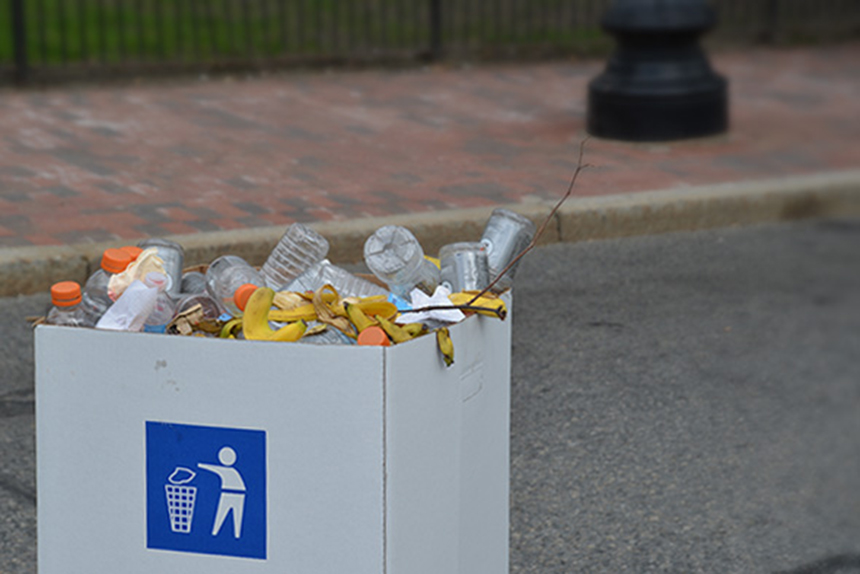Johnston Digester Plans to Open This Winter … Really
October 5, 2018
JOHNSTON, R.I. — This time, the anaerobic digester plans to open for real. Truly.
After a failed first attempt, delays, and a restructuring of ownership, the food-scrap processor and energy facility near the Central Landfill is close to operating again.
The anaerobic digester opened briefly in August 2017, after a two-month delay. But the equipment that separates plastic and other inorganic items from food scrap didn’t operate properly. Other equipment retrofits were made, such as winterizing pipes. The facility now expects to take feedstock and be fully operational this winter.
Like two giant stomachs, 2.5 million-gallon tanks at the facility ferment the organic material, releasing a biogas that is captured to generates electricity and an organic byproduct.
The $18.9 million project broke ground on May 28, 2015, with a goal of opening by the end of the year. But there were permitting delays and financial restructuring by its owner, Blue Sphere Corp., based in Charlotte, N.C. Orbit Energy Rhode Island LLC now runs the project and is co-owned by Blue Sphere and the investment management company, Entropy Investment Management, also based in Charlotte.
The facility will accept large-scale shipments of liquid and solid organic waste from food manufacturers, schools, and grocery stores. The digester can’t yet accept tall crates of organics that are tightly wrapped in cardboard and shrink-wrap and fastened to pallets. But the contents of those containers are acceptable as the facility has machines to remove individual packaging made of plastic, cardboard, and metal.
A second system is designed to accept liquefied organics, or slurry, that it free from non-organic packaging.
Dedicated liquid organics, such as leftovers from potato-chip making, can also be delivered from 6,000-gallon tanker trucks.
Oribit is seeking contracts from facilities across southern New England willing to ship their unneeded organics to the facility at 289 Scituate Ave.
The digester will be able to receive up to 249 tons of organics daily.
The biogas fuels up to 3.2 megawatts of electrical output that will be feed into the power grid or used to power the digester’s boilers. It will also sell an organic compost-like byproduct.
The digester is the second commercial-scale option for disposing of unused food and organic materials. Earth Care Farm in Charlestown runs an open wind row composting operation
Categories
Join the Discussion
View CommentsRecent Comments
Leave a Reply
Your support keeps our reporters on the environmental beat.
Reader support is at the core of our nonprofit news model. Together, we can keep the environment in the headlines.
We use cookies to improve your experience and deliver personalized content. View Cookie Settings




Question – is this anaerobic digester able to accept compostable "plastics" such as restaurant products made from starches, soy protein, or cellulose?
Anyone know if it’ll accept compostable serviceware, etc?
Has the engineering wizards proforma how long it will take to "break even" on the investment front?
Try 50 years +/- ……….. You may not believe this but anaerobic digestion is "doomed". Its just a matter of time.